Awards



The Jaffa, a Luxury Collection Hotel, Tel Aviv, stands as a prestigious 5-star establishment situated within a meticulously restored 19th-century complex, once the home of Jaffa's French Hospital. Ideally positioned near the Mediterranean Sea and the historic port of Jaffa, it grants effortless access to attractions such as the Shuk Hapishpeshim flea market, the city of old Jaffa’s art galleries, and charming local boutiques, all just a short stroll away. Our signature chef restaurant, Giardino, showcases culinary creations inspired by the flavors of the Northern Mediterranean, following a unique "port-to-table" philosophy. Alternatively, relish elevated Israeli cuisine at Golda's at The Jaffa. Experience serenity at the L.RAPHAEL Spa and indulge in the personalized luxury of our 120 opulent rooms and suites, thoughtfully appointed by the renowned designer, John Pawson. Allow our dedicated concierge team to meticulously orchestrate every aspect of your stay, renew your spirit, and ignite your imagination.
Open plan style suite with high ceilings and contemporary design in our exquisitely restored 19th century historical wing.
Contemporary designed suite offering matchless views from the spacious balcony. Luxurious bedroom, lavish bathroom and vast living room.
Take in breathtaking views of Tel Aviv-Jaffa from your own urban oasis.
Soak in the Mediterranean sun at our outdoor pool and pool bar. The Swimming Pool and The Pool Bar are seasonal.
Your Urban Oasis in Tel Aviv
The Jaffa provides a perfect blend of service, style, and modern luxury. An urban resort in the city’s trendiest neighborhood, just minutes from the beach.
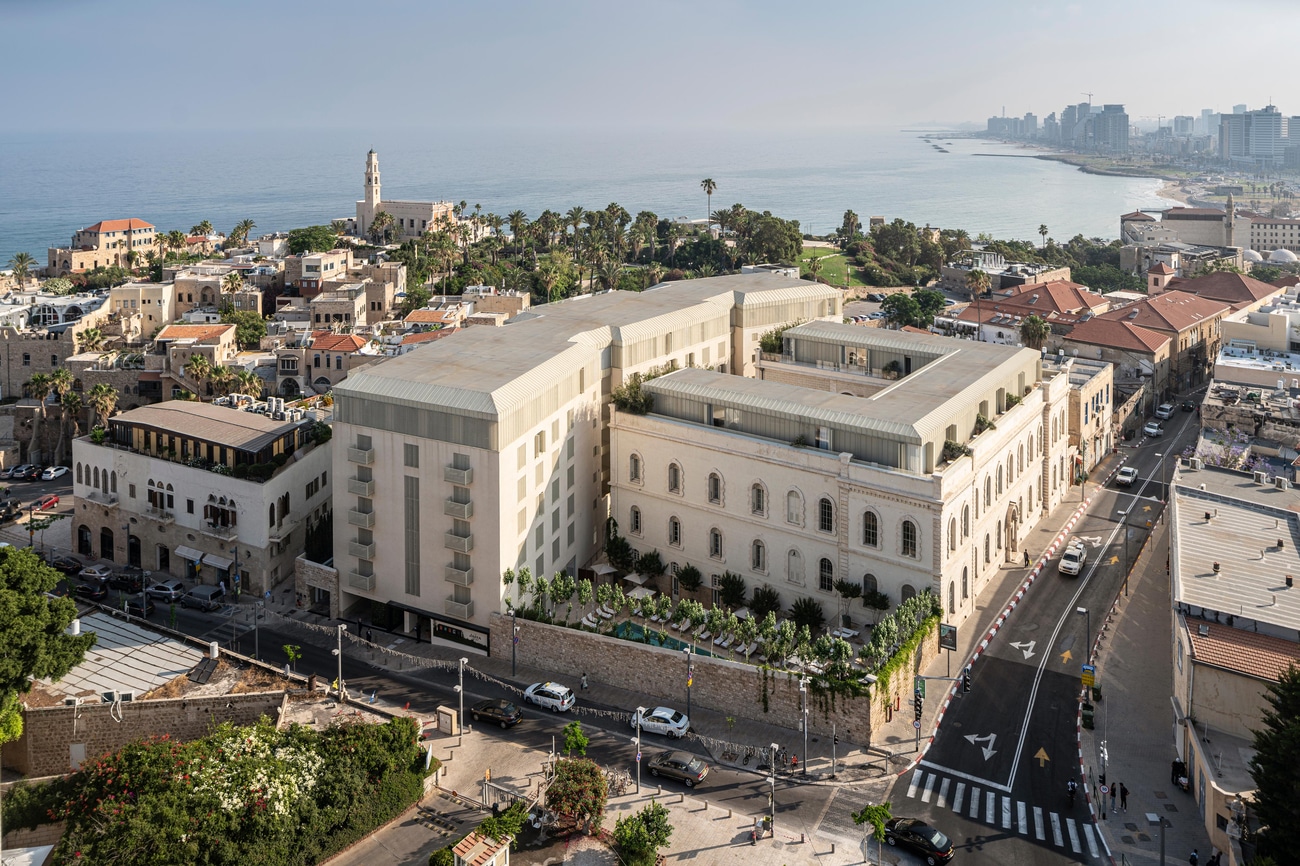
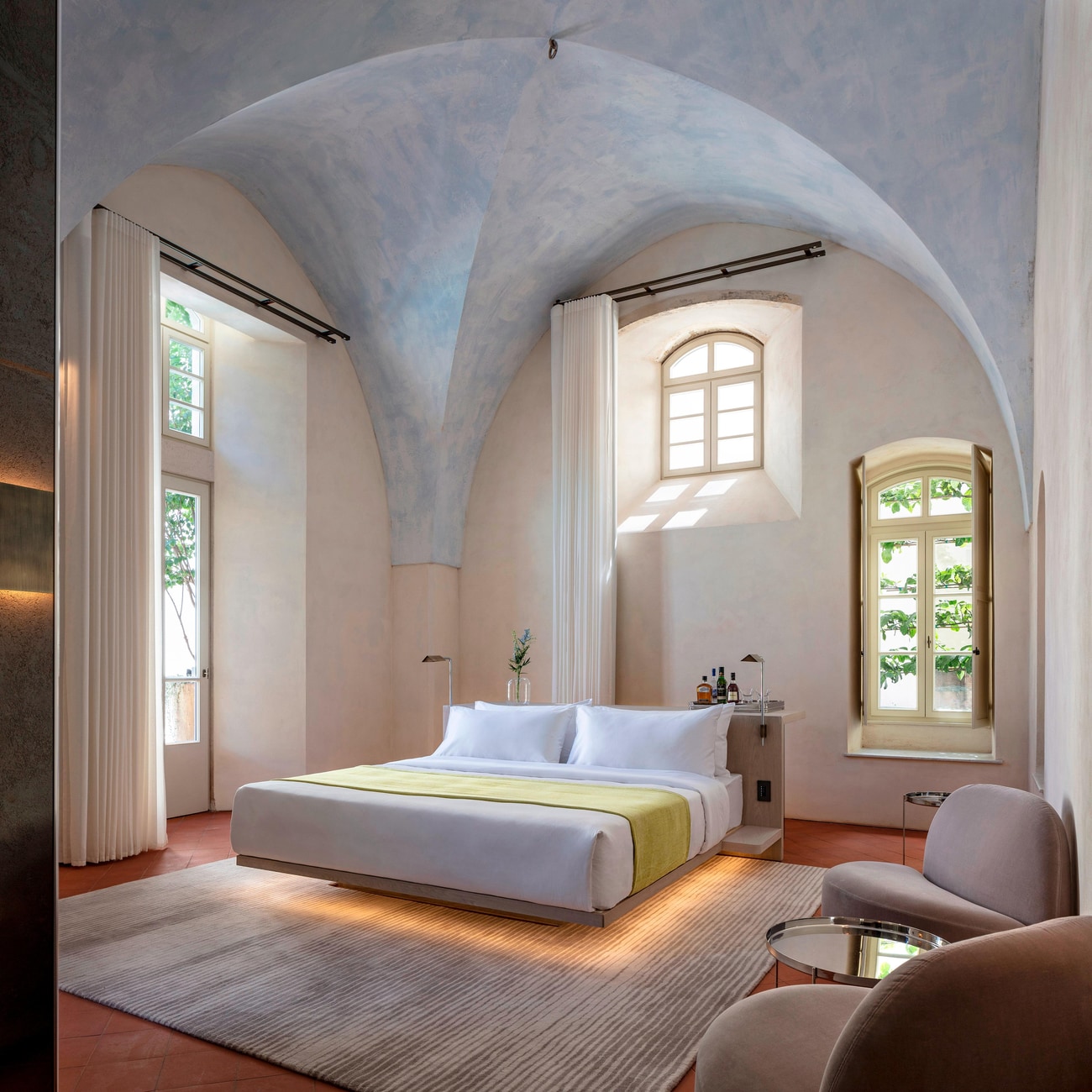
The Jaffa embraces an enchanting history and features a unique restoration of an unsurpassed 19th century Neo Renaissance building preserving historic aspects.

Where Cotemporary Lifestyle Meets 4000 Years of History
The year is 1875. The ship that sailed at dawn from the Port of Beirut approaches the shores of Jaffa. Their faces wind-swept and flushed with excitement, dozens of pilgrims crowd the deck: Russian Orthodox, German Templers, French nuns and Italian magnates, even Mormon missionaries from the distant United States, all swept up by the wave of religious revival that beset the Christian world at the end of the 19th century. Murmuring to one another in a medley of languages, gripped by the mysterious allure of the Levant, on this spring morning they will ascend to the holy city—better known as the City of Jaffa.
One man stands out in the crowd: François Guinet, a wealthy businessman from Lyon. What did he see as he gazed out from the ship’s bow that day? A French tourist who had almost died of malaria on a recent visit to Beirut, and lost two friends to the disease—what picture did he behold on the sandstone banks that sloped into the sea? The walls of the Old City. Rooftops and palm trees. Church towers and minarets. And swamps, everywhere he looked: sprawling stretches of shallow, dingy water in a murky shade of tea-brown. Putrid ponds, reflecting back the bright blue sky in their glassy surfaces. And beyond them, the blighted ruin of Jaffa’s alleyways.
At the sight of all this, the distraught Guinet resolves to build a hostel for pilgrims making their way to Jerusalem, a shelter in Jaffa that will welcome both nobility and commoners with a meal and a soft bed. Upon his return to Paris, determined to keep his vow, he consults with his friend King Louis V and persuades him to contribute funds to the sacred undertaking. The king dispatches his royal architects, Ribellet and Grebez, to Jaffa. Touring the area, the two men climb to the highest point in the region, which towers over the horizon from a height of 85 feet above sea level. At the summit, they shake hands with representatives of the Ottoman regime and purchase 1.2 acres of land.
The construction lasts for four years, resulting in one of the first buildings erected outside the walls of the Old City. Towering brightly above the ruins, the U-shaped building boasts an inner courtyard and two 20-feet high floors. The raw materials, as well as the blacksmiths and glaziers, are imported from France, but the aesthetics typify the Roman Renaissance: a harmony of arches and adornments, columns and stone statuettes, stained-glass windows, braided laurels and flowers made of iron. At the heart of the top floor, as if on the left side of the building’s thorax, stands a small church: a set of heavy wooden doors guards one of the most beautiful chapels in the Holyland, replete with polygonal domes and stunning mosaic windows reaching up to the top of its very high walls. A white dove glides above the altar, and high up above, the ceiling is adorned with a fresco of the star-studded night skies of Bethlehem.
In 1879, the building was dedicated in a grand ceremony. In the intervening years, it was decided that the original purpose would be expanded to include a hospital for the destitute. “The Saint Louis V Hospital,” declared Guinet in his gravelly voice, “will be open free of charge to all the people of the Holyland, regardless of their sex, religion or nationality.” People soon began to arrive from all across the land – Christians, Muslims and Jews. Their intake and treatment was overseen by the devoted Sisters of St. Joseph of the Apparition, and a senior physician was appointed by King Louis V. When it opened, “The St. Louis” contained forty beds, and it grew to a capacity of one-hundred and twenty. By the turn of the 20th century it was considered the most modern hospital in the region.
~
The story of Jaffa, one of the world’s most ancient port cities, encompasses four millennia. A short tour of its historic sites, even traversing no more than a few hundred yards, reveals findings from the Bronze Age, remnants from the Pharaonic Age, evidence of the Persians and the Phoenicians, the Greeks and the Hasmoneans, and many traces left by the city’s various Medieval and modern conquerors: the Romans and the Crusaders, the Byzantines and the Mamelukes, the Ottomans and the British. Egyptian parchment scrolls dating to the 15th century B.C. indicate that the word “Jaffa” connotes “beauty” (in both Hebrew and Arabic, the words are still closely related). But Jaffa was coveted by empires from East and West not only for its beauty, but also for its strategic location on the Via Maris: it was through Jaffa that camel processions, salt traders, and perfumes merchants passed on their long travels from the Nile Delta to Mesopotamia, and it was there that ships sailed the shores of the Levant, from Constantinople to the Venetian Republic and the rest of Europe.
Contemporary Israeli life – and how easy this is to forget – is but the topmost layer, the upper surface of thousands of years. At the Clock Tower Square, I tie my bike and walk south, in the footsteps of François Guinet and the nuns of St. Joseph, along Yefet Street towards Louis Pasteur Street. Here, at the southeastern edge of the city, right beneath my feet, ran the outline of the ancient wall, with its moat and fortifications. On the ruins of the wall erected by the Greeks in the 1st century A.D., the Romans built a wall in the 4th century; and on the ruins of the Crusaders’ wall from the 12th Century, the Ottomans built theirs in the 19th century. It was from the shattered stones of the latter that the mansions now lining Yefet Street were built. Further along were the houses of Ajami and Jibalia, the Arab neighborhoods that spread to the south, and the Jewish community’s neighborhoods of Neveh Tzedek and Neveh Shalom to the east.
The centerpiece in the entrance to The Jaffa is a stunning remnant of that Crusader wall. A section of the round wall with its light stones, more than seven-hundred years old, appears to rise up into the warmth of the elegant lobby like a prong of rock jutting out of the sea. The wall, which snakes into the hotel’s courtyard, was uncovered in excavations conducted by the Antiquities Authority in preparation for the renovation and preservation project. But this rare archeological finding was not the only historical treasure uncovered. To everyone’s astonishment, the excavation also revealed three cellars hidden under the building, multiple arches, domes and clusters of columns, an entire addition floor of almost 10,00 square feet, and even a well and a delightful garden in the courtyard.
The impact of these precious discoveries dictated the design concept and the entire artistic narrative, as conceived by Ramy Gill, the Jaffa architect tasked with restoring the building and planning the hotel: “The perception of thousands of years of history, with layers that lead up to the present day, obliged us to act with humility and respect, and to minimize our fingerprints as creators. We saw ourselves as tasked with preserving the work of prior generations, and of humanity at large. We created a contemporary, luxurious atmosphere, but one that is rooted in the place and faithful to its identity.”
About a decade ago, there was another twist in the plot, when the historic asset changed owners. The developer who purchased the site from the French order in 1997 resold it in 2006 to the Jewish American real estate tycoon Aby Rosen, founder of RFR Holding. Ramy Gill, the local architect, was then joined by British luminary John Pawson, who designed, among other things, the Museum of Design of London. The two partners, in a sort of modern reincarnation of the royal architects Grebez and Ribellet, jointly formulated their artistic language and plans for expanding the complex.
Says Pawson: “While paying close attention to details and simplicity, to proportionality, what we created is in fact comfort. An enclave of quiet and beauty, with natural flow between the spaces. Beyond the vast cultural and historical context, this is first and foremost a place where one can be comfortable, a place that gives architectural comfort and a sense of intimacy.”
The result is a subtle dialogue between the two centuries, 19th and 21st, expressing each of their glories and strengths. The Renaissance U-shaped building was restored to the glory days of the 19th century and the new, elongated building erected opposite it took on a contemporary syntax, an adaptation of 21st century language. There is mutual respect between history and the present – without any bridges, adornments or connections between the two buildings – as though the past is simply gazing at the present and vice versa.
This restraint and minimalism are also preserved in the inner spaces. The rooms of the ancient, high-ceilinged building feature just a few modern elements – secluded bathing chambers, closets, mirrors. All of the wonderful vestibules have been left open, just as they were, unprotected by any glassed-off climate envelopes. The cream and ivory tones are lit by minimalist fixtures, accentuated by thin glass and touches of gold. The minimalistic materials and monochromatic color scheme also guided the redesign of the floors: the original sandstone, so dominant in Jaffa, was augmented by its distant cousin, Travertine, into processed surfaces of honey-colored stone that just barely kiss the texture of the sandstone.
Appealing to both eyes and hearts are the gorgeous, lace-like latticed blinds featured in both the historical building and the new one. This delicate, poetic element, which quotes from the “Mashrabiya” of traditional Arab architecture, calls to mind a veiled woman’s gaze, and is particularly impressive against the background of the neo-Classical European sensibility. And how wonderfully appropriate it is for the hot Middle Eastern climate: a barrier between outside and inside, yet allowing for the flow of light and air. The intricate patterns created by the light and shadows playing through the latticework, as they grow long and variable in the afternoon hours, is reminiscent of the light filtering through treetops or vine foliage.
A light breeze carries in the salty sea, and with it a faint fragrance of jasmine and honeysuckle. Cascades of white bougainvillea are reflected in the blue eye of the swimming pool. Numerous evergreen patches of cypress and linden trees, gardenia and lavender shrubs, bring tiny birds into the courtyard with their chirps and whistles. Or perhaps they are attracted by the inviting aromas from the Italian restaurant, “Don Camillo,” and the old-school Jewish deli, “Golda’s,” with its black-and-white photographs of the legendary Israeli prime minister alongside world leaders.
The site of the fashionable new lounge-bar is the small chapel on the top floor. To avoid risking any offence to religious believers, its icons were removed, and a Catholic priest held a de-sanctification ritual. What took longer was the removal of the paint used on the walls in the 1970s: for two whole years, ten workers perched on scaffolding with surgical knives in hand until they slowly uncovered the original frescos beneath the layers of acrylic. The pale blue star-studded skies of Bethlehem were retained just as they were found. Also reinstated was the white dove that hovers above the altar, and the original stained-glass mosaic windows, restored by experts using crystal glass. The nightlife of Tel Aviv-Jaffa has never encountered such a refined and sophisticated space.
A stroll among the floors reveals more and more delights and amenities: a state-of-the-art gym, a luxurious spa from international brand L.RAPHAEL, and the “Shesh Besh” bar. International hotel chain Marriott had every reason to include The Jaffa in its Luxury Collection, a glamorous series of some ninety select hotels and resorts, all of which reside in the most unusual heritage sites around the world. The elegant atmosphere in The Jaffa celebrates history and authenticity, while at the same time pulsing with vivacity and immersed in the present.
In addition to the 120 hotel rooms and suites, The Jaffa also includes 34 private luxury residences. The jewel in the crown is an expansive and dazzlingly beautiful penthouse that encompasses the entire top floor and the rooftop, where a flourishing garden of lush Mediterranean greenery complements the breath taking panorama of blue horizon as far as the eye can see.
The person responsible for all this abundance is the owner and founder of RFR Holding, Mr. Aby Rosen. The Jaffa is his kingdom and over the past decade he has been involved in every detail of its rehabilitation, investing close to half a billion dollars in the project. Among other properties owned by Rosen, who is one of the United States’ most powerful real estate magnates, are New York’s Seagram Building and Chrysler Building and the fashionable hotel 11 Howard. The Jaffa is Rosen’s first project in Israel, and one of the most personal and unique ventures he has undertaken, especially dear to his heart given his family background: his parents live in Israel and he fondly recalls the country’s landscapes from his childhood summer vacations.
Aby Rosen: "The Jaffa is a 5-star hotel in the way a 5-star hotel should be. You arrive as a guest and find yourself immersed in a dream, in a world of storytelling. I began this project in 2005 and it took more than a dozen years to complete. I was involved in choosing every detail, each nuance of creating a grand experience. Yet still, the result is enchanting to me, exceeding all my expectations.”
Rosen is also known as one of the world’s foremost art collectors. His collection, estimated at over 700 million dollars, includes works by Picasso, Basquiat and Francis Bacon. These and others are frequently loaned to his hotels and other properties in the U.S. and Europe, but Rosen says he is not planning to fly even a single piece to Israel: “There is no need. The architecture and the textures here are so beautiful and lyrical that nothing needs to be added, not a single adornment.” And indeed, the walls in The Jaffa’s rooms, vestibules, and passageways are all bare—light and pure, with vaulted ceilings. It is these walls themselves, with portraits of Jaffa’s scenery viewed through their windows, and the spectacular historic site that surrounds them, which are themselves the masterpiece.
Unrivalled Luxury in Tel Aviv
The first luxury hotel of its kind, The Jaffa is located within the walls of a 19th century complex that once housed Jaffa's French Hospital.
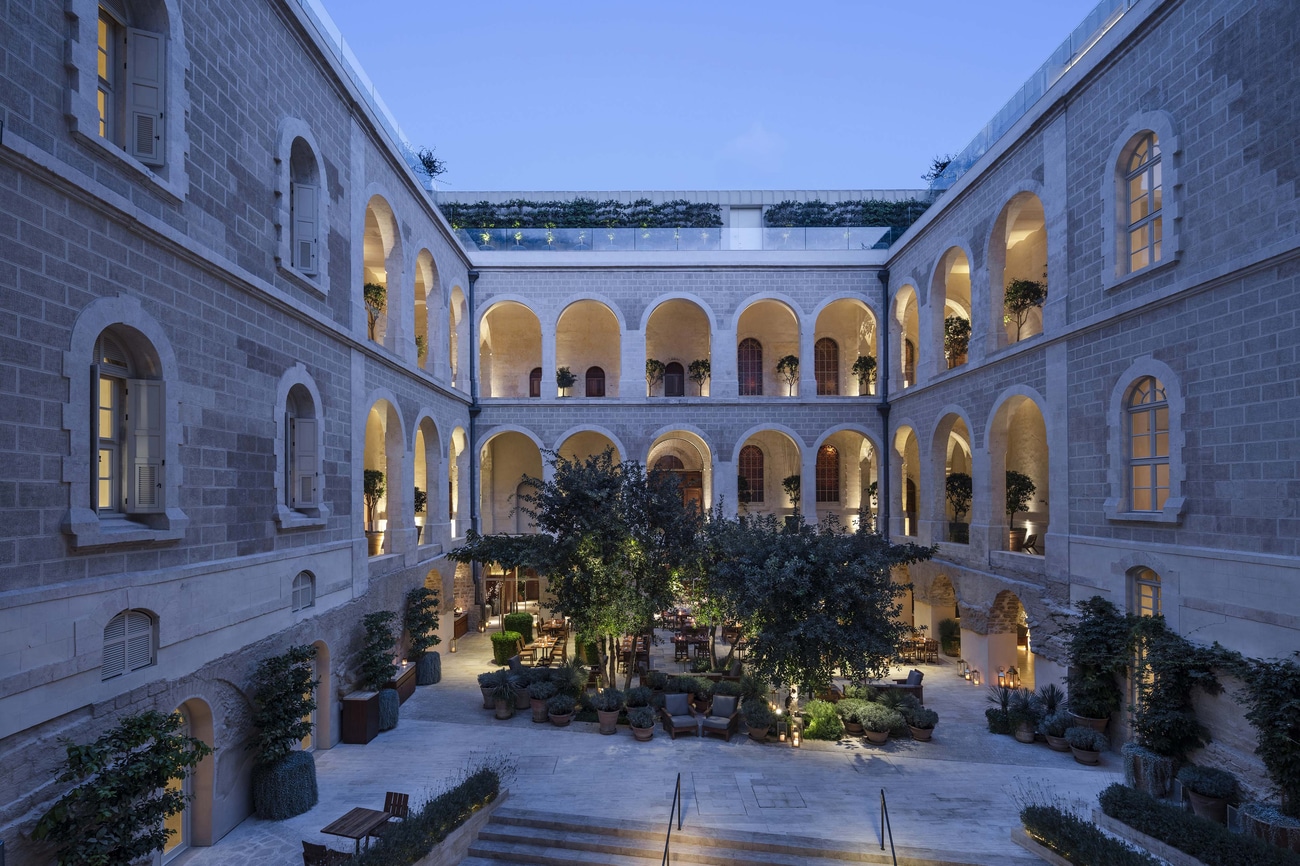


The Jaffa, a Luxury Collection Hotel, Tel Aviv has been awarded as one of the best hotels in the Middle East by the prestigious Condé Nast Traveller 2023.
The 19th century structure was transformed into a blend of modern-meets-historic, while maintaining the building's heritage.
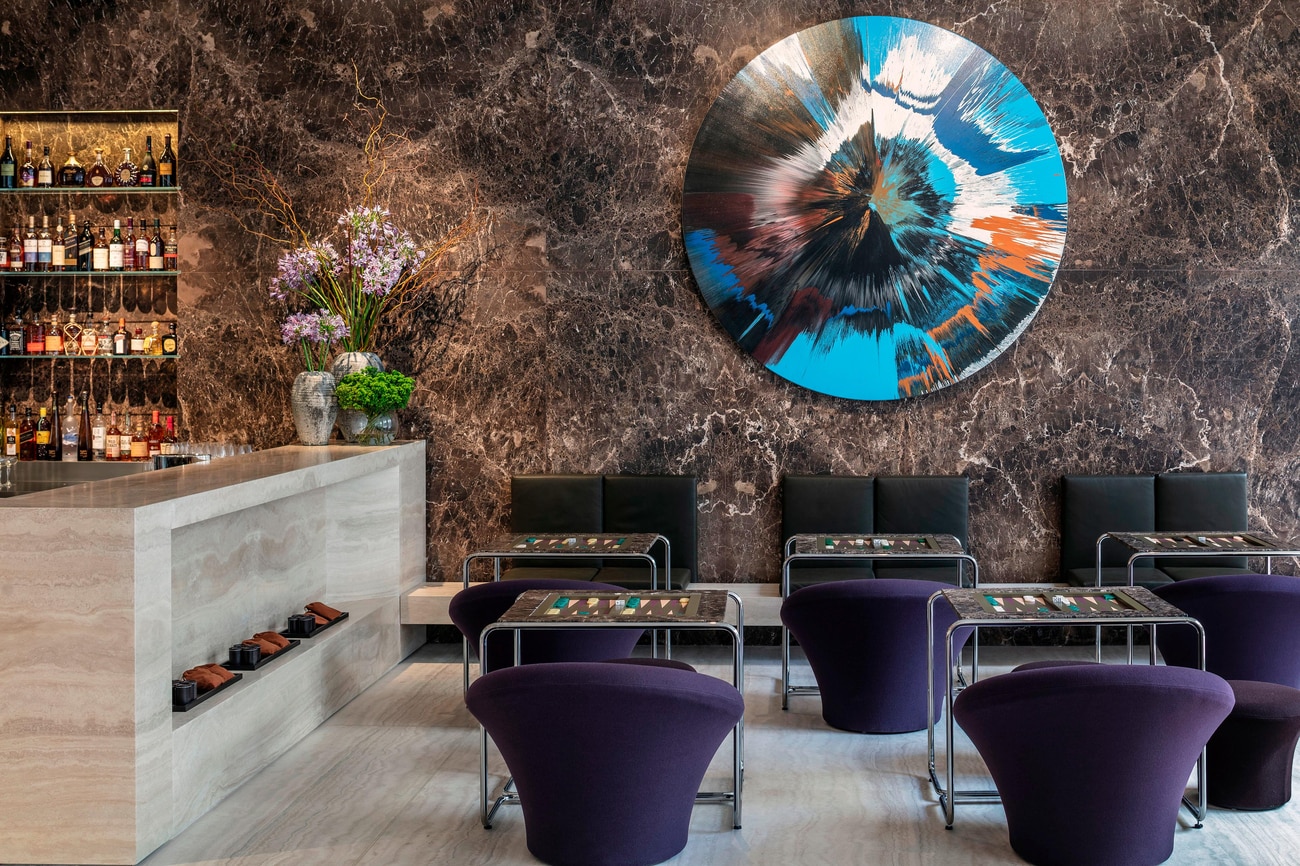

John Pawson’s signature minimalist style, custom furniture, sumptuous beds, lavish bathrooms and luxurious amenities present the fine comforts of a lifestyle hotel.

Get to know the enchanting old city of Jaffa in a tranquil sunset tour given by The Jaffa’s devoted concierge team. Walk through history as you explore this fascinating ancient port city. Every Wednesday.
Take a moment to enjoy the traditional ceremony of slow roasting coffee as it was prepared in the region throughout the centuries. Taste the rich and bitter flavours that gradually develop in the “Finjan” and inhale the exceptional aromas of strong coffee and cardamom. Every Thursday.
Pop-up tea time in the mesmerising space of The Chapel – an exclusive collaboration with Israel phenomenon pastry chef, Alon Shabo. Experience unique flavour combinations in a three course menu of contemporary patisserie, local spices and handmade techniques paired with a fine tea selection.
Jaffa - a multi-sensory stimulating experience
Offering an intriguing mix of rich history and culture, delicious cuisine, exciting nightlife, and perfect weather, Tel Aviv - Jaffa is a must visit city.

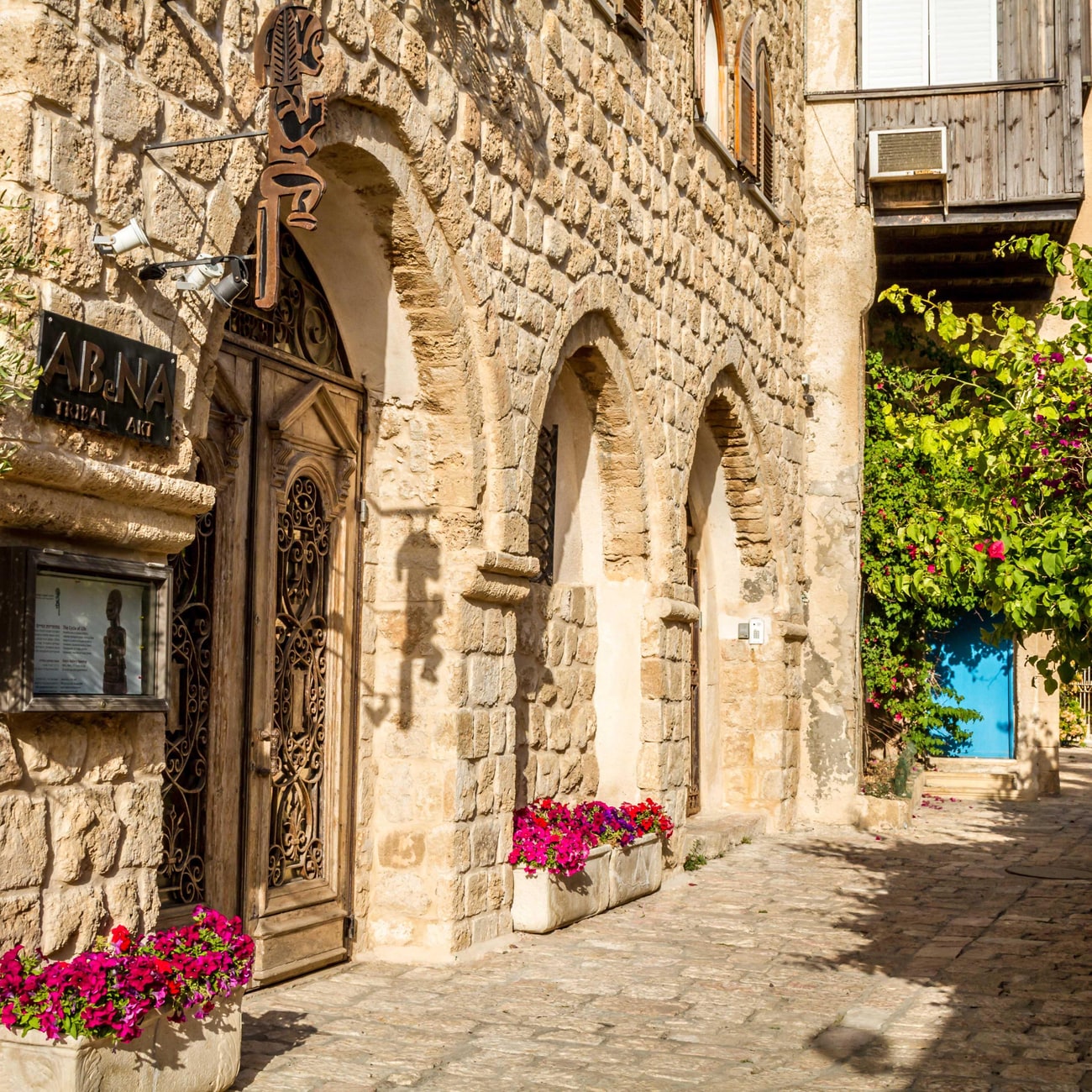
Tel: +972 3 5162000
E-mail: lc.tlvlc.reservations@theluxurycollectionhotels.com
The Jaffa, a Luxury Collection Hotel, Tel Aviv
2 Louis Pasteur Street, Tel Aviv-Jaffa, Israel, 6803602
On-Property
Private Car Service
Limousine/Van Service
Nearby
Bus Station
Tel Aviv Central Bus Station
Train Station
Israel Railways - Hahagana Station
Awards


Plan and Prepare for your Stay
24 Hour Room Service
Daily Housekeeping
Turndown Service
Bicycle Rental
Dry Cleaning Service
Laundry
Room Service
Wake up Calls
Free Wifi
Mobile Key
Service Request
Check-in: 3:00 pm
Check-out: 12:00 pm
Minimum Age to Check In: 18
Smoke Free Property
Pets Welcome.
Max 1 pet per room. Max weight 5kg/11lbs. No pet fee.
Maximum Pet Weight: 5.0kgs
Maximum Number of Pets in Room: 1
Daily: $20.00
Weekly: $140.00
PerStay: $140.00
Flea Market Parking Ltd. 1.0 KM
Daily: $20.00
Provided by The Jaffa Guest Experiences team
Accepts: Cash, Credit Cards
Contactless mobile payments
Concierge desk service
Property has elevators
Languages spoken by staff:
English, Hebrew
For more information about the physical features of our accessible rooms, common areas or special services relating to a specific disability please call +972 3-5042000
Accessible on-site parking
Property has elevators
Self Operating lift or a sloped entry in hotel swimming pools
Service Animals are Welcome
Valet parking for vehicles outfitted for drivers in wheelchairs
Van Accessible on-site parking
Accessible Entrance to On-Site Pool
Entrance to On-Site Fitness Center is Accessible
Main Entrance is Accessible
On-Site Restaurants are Accessible
Room and Suites Access through the Interior Corridor
Accessible Vanities
Adjustable Height Hand-Held Shower Wand
Alarm Clock Telephone Ringers
Electronic Room Key
Guest Room and Suites Doors Self-Closing
Hearing Accessible Rooms and/or Kits
Lever Handles on Guest Room Doors
Lowered Electrical Outlets
Lowered Viewports in Guest Room Doors
Mobility accessible rooms
Non-slip Grab Rails in the Bathroom
Roll-in Shower
Room Windows Open
Secondary Locks on Room Windows
Toilet Seat at Wheelchair Height - Toilet for Disabled
Viewports in Guest Room and Suites Doors
Carbon Footprint: 93.90 kg per room night
Water Footprint: 1469.59 liters per room night
The check-in time at The Jaffa, a Luxury Collection Hotel, Tel Aviv is 3:00 pm and the check-out time is 12:00 pm.
The pet policy at The Jaffa, a Luxury Collection Hotel, Tel Aviv is:
The parking options at The Jaffa, a Luxury Collection Hotel, Tel Aviv are:
The property amenities at The Jaffa, a Luxury Collection Hotel, Tel Aviv are:
Yes, The Jaffa, a Luxury Collection Hotel, Tel Aviv has free Wi-Fi available to hotel guests.






